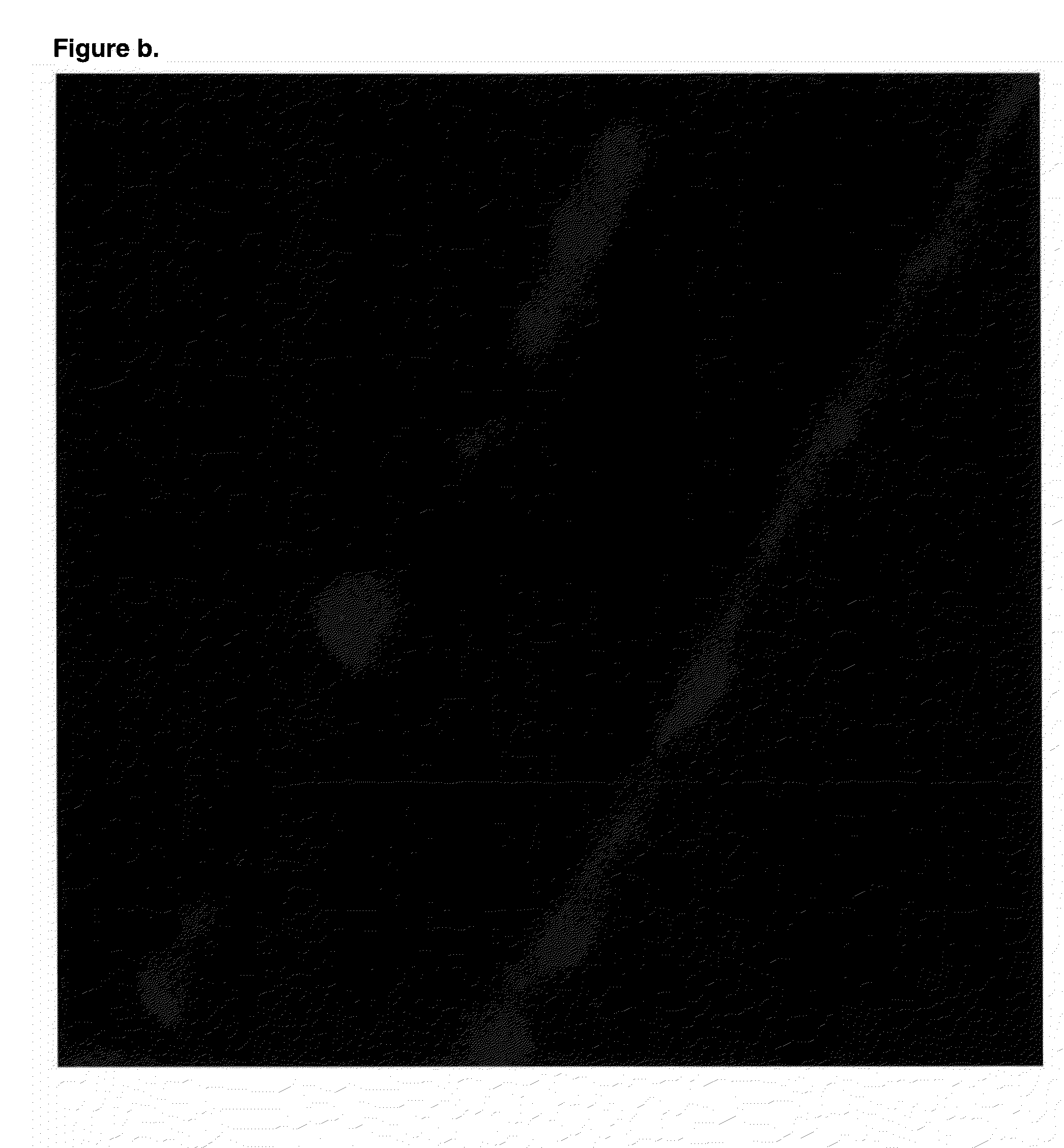Method of producing silver nanowires
a silver nanowire and nanotechnology technology, applied in nanotechnology, transportation and packaging, metal-working apparatuses, etc., can solve the problems of reducing the electrical conductance and the stability of the product, and high-quality nanowires have large market demands
- Summary
- Abstract
- Description
- Claims
- Application Information
AI Technical Summary
Benefits of technology
Problems solved by technology
Method used
Image
Examples
embodiments
[0051]In one embodiment, an anti-sulfide agent is added into the polyol process to neutralize the sulfide-related chemicals. The anti-sulfide agent include, but are not limited to: acrolein, glyoxal, triazine, and n-chlorosuccinimide(NCS). The presence of anti-sulfide agent will react with the sulfide-related chemicals, and it will also protect the synthesized wires from further corrosion. However, since the polyol process is a method very sensitive to any kind of the additives or contaminants, a precise control on the dose and the feeding step of anti-sulfide agent is critical to the high quality of the product. The concentration of the anti-sulfide agent is 1˜500 μM. It is added into the solvent (ethylene glycol, EG) of the polyol process, according to the mechanism, n-chlorosuccinimide binds more readily with the sulfide-related corrosive element than with the silver nanowires. N-chlorosuccinimide is known as “scavengers” or “getters”, which compete with the metal and sequester t...
example 1
[0059]A solution of 1000 ml of ethylene glycol containing 0.02 g NaCl was first immersed and then heated in an oil bath set to 150° C. for 60 minutes. Two constant pressure funnels were then utilized for the simultaneous injection of two additional 1000 ml ethylene glycol (EG) solutions into the hot EG solution at a rate of 100 ml / min. The first solution contained 100 mM of silver nitrate, and the second solution contained 300 mM poly(vinyl pyrrolidone) (PVP, Mw=55000). Mechanical stirring was applied throughout the entire nanowire synthesis. The reaction was carried out for 100 minutes at 150° C. after which the hot EG solution was cooled to room temperature. The resulting suspension samples were first washed with ethanol and then with water to remove most of the EG and the PVP. During the washing process, the suspension was centrifuged at 4000 rpm for 10 minutes after washing with ethanol and then centrifuged at 4000 rpm for 30 minutes after washing with water to ensure that most ...
example 2
[0060]0.003 g NCS was added to 3000 ml of ethylene glycol (EG), and then blended until it fully dissolved resulting in a solution. The ethylene glycol solution containing trace amount of NCS was then used for the preparation of silver nitrate and poly(vinyl pyrrolidone) solutions. The first solution contained 100 mM silver nitrate, and the second solution contained 300 mM polyvinyl pyrrolidone) (PVP, Mw=55000). A solution of 1000 ml of EG containing trace amount of NCS and 0.02 g NaCl was first immersed and then heated in an oil bath set to 150° C. for 60 min. Two constant pressure funnels were utilized for the preservation and storage of the silver nitrate and PVP solutions which were then utilized for the simultaneous injection of the first 1000 ml EG solution containing 100 mM of silver nitrate and the second 1000 ml EG solution containing 300 mM PVP into the hot EG solution at a rate of 100 ml / min. Mechanical stirring was applied throughout the entire nanowire synthesis. The rea...
PUM
| Property | Measurement | Unit |
|---|---|---|
| Temperature | aaaaa | aaaaa |
| Temperature | aaaaa | aaaaa |
| Temperature | aaaaa | aaaaa |
Abstract
Description
Claims
Application Information
 Login to View More
Login to View More - Generate Ideas
- Intellectual Property
- Life Sciences
- Materials
- Tech Scout
- Unparalleled Data Quality
- Higher Quality Content
- 60% Fewer Hallucinations
Browse by: Latest US Patents, China's latest patents, Technical Efficacy Thesaurus, Application Domain, Technology Topic, Popular Technical Reports.
© 2025 PatSnap. All rights reserved.Legal|Privacy policy|Modern Slavery Act Transparency Statement|Sitemap|About US| Contact US: help@patsnap.com



